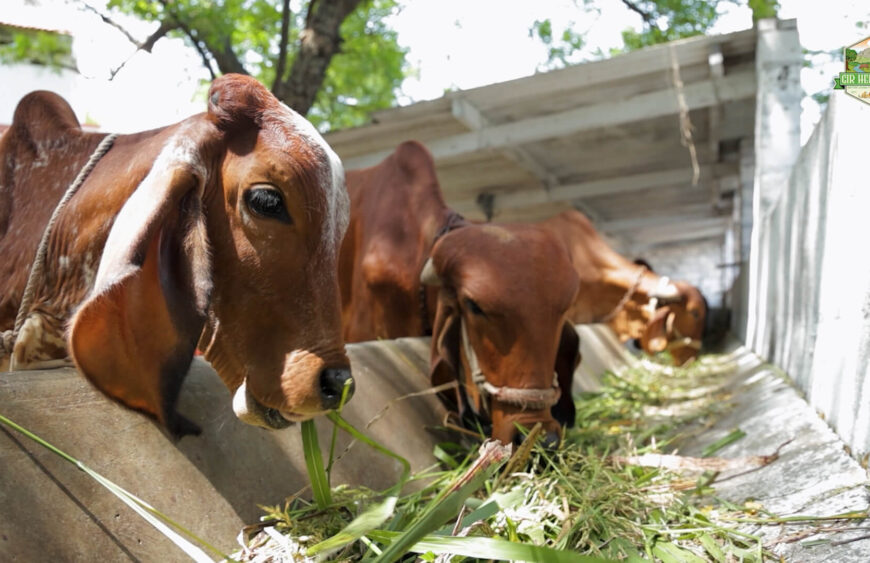Gir Cow: The Majestic Bos Indicus Breed Enriching India’s Dairy Heritage

Introduction
In the diverse tapestry of India’s agricultural and cultural landscape, one breed stands out for its grace, resilience, and invaluable contributions to the dairy industry – the Gir Cow. Revered for its unique characteristics and historical significance, the Gir Cow, scientifically known as Bos indicus, is an indigenous breed that has played a pivotal role in shaping the nation’s dairy heritage.
The Origins of Gir Cows:
Distinctive Physical Features:
Hump and Dewlap:
One of the most recognizable features of Gir Cows is the prominent hump on their shoulders, a characteristic shared by many Bos indicus breeds. Additionally, they often exhibit a distinctive dewlap – a loose fold of skin under the neck – which aids in thermoregulation.
Coat Color:
Gir Cows are typically characterized by a reddish-brown coat, though variations in color exist. The coat serves as a natural defense against the harsh Indian climate, providing protection against the sun's rays and insects.
Resilience to Harsh Conditions:
Adaptability is a hallmark of Gir Cows. They thrive in a range of environmental conditions, including heat and humidity, making them well-suited to various regions across India.
Dairy Excellence:
Milk Quality:
Gir Cows are renowned for their high-quality milk, which is rich in fat and protein. The A2 beta-casein protein found in their milk is considered highly digestible and is associated with several health benefits.
Butterfat Content:
The milk of Gir Cows is notably high in butterfat, making it ideal for the production of ghee (clarified butter). Ghee made from Gir Cow milk is celebrated for its rich aroma and nutritional properties.
Cultural Significance:
Vedic Heritage:
Gir Cows have deep cultural and religious significance in India, especially in Hinduism. They are often associated with the sacred and are revered for their contribution to rituals and ceremonies.
Conservation Efforts:
Recognizing the importance of preserving indigenous breeds, efforts have been made to conserve and promote Gir Cows. Various organizations and farmers are actively involved in breeding and maintaining the purity of the Gir breed.
Conclusion:
The Gir Cow stands as a symbol of resilience, cultural heritage, and agricultural prowess in India. Its unique characteristics, adaptability, and exceptional milk quality have positioned it as a prized asset in the country’s dairy sector. As the nation continues to celebrate and preserve its diverse agricultural heritage, the Gir Cow remains a living testament to the harmonious relationship between humans and animals that has flourished for centuries.
